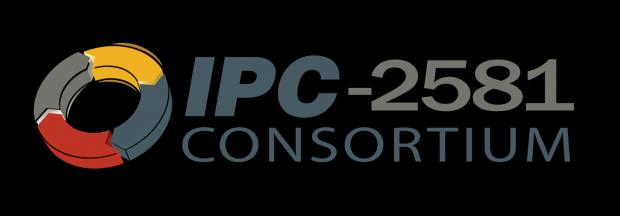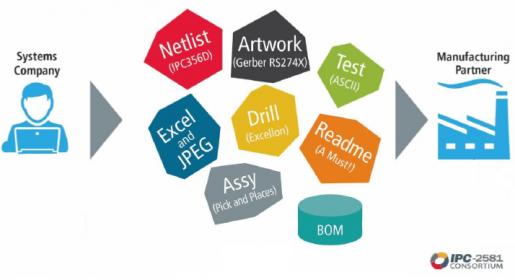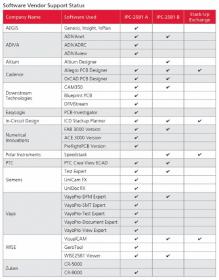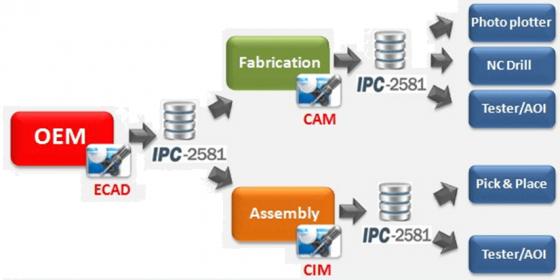The motivations to establish an industry standard data format are varied:
[LIST=1]
- solidify a “de facto” standard, transitioning its evolution and support from a single company to an industry consortium;
- aggregate disparate sources of design and manufacturing data into a single representation, with documented semantics;
- provide a reference to which EDA tools that need to import/export this data can be developed and tested;
- leverage recent advances in the definition of “markup languages” to represent complex data – e.g., text, numerical data, geometric data, etc.; and, perhaps most importantly
- reduce the risk of an error in data interpretation, which would result in lost time and money.To be sure, engineers can be somewhat wary about adopting a new data format standard and transitioning their design flows accordingly. Indeed, perhaps the second most famous engineering slogan (after “Anything that can go wrong will go wrong.”, aka Murphy’s Law) is:
“The nice thing about standards is that you have so many to choose from.” (A. Tanenbaum, Computer Methods)
So, I was perhaps a bit skeptical when I learned of the IPC-2581 standard for the exchange of printed circuit board data – which spans the gamut of board manufacturing, test, and assembly.

I recently had the opportunity to meet with Hemant Shah, IPC-2581 Consortium Chair and Product Management Group Director, Allegro PCB Products at Cadence. Honestly, after our conversation, I was convinced this standard activity encompasses all 5 characteristics listed above, and significantly, will indeed reduce risk and save money.
Hemant described a common PCB release methodology in current use with the image below.

From the PCB design platform and various manual entries, a set of disjointed files are generated – e.g., photoplot data; stackup information; drill data; test data; Bill of Materials data — often a loosely-defined spreadsheet; and, assorted documentation — like “This trace needs to be ~75-ohm characteristic impedance.”
The PCB manufacturer has to coalesce and verify this information to proceed, which takes time and resources – same for the assembly house. There are de facto representations for these files, as illustrated in the figure above – but, there still remains the requirement to correlate and validate the data.
Hemant indicated, “The PCB industry as a whole recognized the need to develop a standard for release to manufacturing and assembly. The IPC-2581 consortium participation includes major manufacturing and assembly firms, EDA tool suppliers, and significantly, major end customers who are releasing some of the most complex board designs.”
Here’s an indication of the breadth of industry participation in the standard: http://www.ipc2581.com/corporate-members/
Hemant added,“The standard is based on xml – open, extendible – allowing the representation of the diverse types of data associated with PCB design. EDA vendors are embracing IPC-2581, adding support to their design platforms – including MCAD platforms. There is a set of public test cases that EDA vendors use to qualify their IPC-2581 tool features.”

“We are seeing rapid growth in the use of this format. Indeed, board manufacturers are imposing a surcharge to customers sending design data other than IPC-2581.”
That got my attention. Still a little skeptical, I asked, “How else is IPC-2581 changing how PCB designs are done?”
Hemant replied, “This is truly a design data exchange format, not just for final release to manufacture. During initial PCB project planning, designers and board manufacturers exchange stack-up proposals using IPC-2581, adding a defined procedure to what has been an informal error-prone communication.” (See the “Exchange” column in the EDA figure above.)
He continued, “The format standard readily supports communication of pertinent subsets of information, for this kind of directed exchange – not all consumers need to see the entire design database.”

“We see it being used in-house to improve processes, as well – designers may incorporate a generic part number, and send the IPC-2581 description to Procurement Engineering, who can add specific BoM detail reflecting their preferred component selection.”, Hemant highlighted.
By now, I was sold – a standard for comprehensive design release and exchange, appropriate for all aspects of the PCB supply chain. “How do interested parties learn more?”, I asked.
Hemant enthusiastically replied, “We encourage anyone interested in improving board design processes to join the consortium – there is no fee, and no contracts. There are both corporate and associate levels of membership, based upon the level of participation of interest. Our web site provides lots of information, including the current approved standard and the discussion underway for new enhancements in the next revision.”
http://www.ipc2581.com/articles-and-blogs/
“Also, at the upcoming IPC APEX EXPO 2018 conference, designers, EDA companies, and manufacturing and assembly houses will be sharing a wealth of information on IPC-2581.”
http://www.ipcapexexpo.org/html/default.htm
IPC-2581 is clearly not “just another standard”, in reference to Professor Tanenbaum’s quote. This activity has already improved processes and procedures for PCB design data exchange and release, saving money. Its adoption will undoubtedly (and rapidly) become more pervasive.-chipguy
Read more from Tom Dillinger





Comments
3 Replies to “IPC-2581: The Standard for PCB Data Exchange”
You must register or log in to view/post comments.